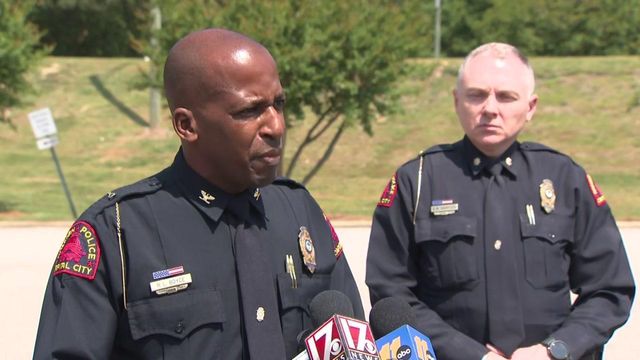Three ways to know if your child is ready for Pre-K or kindergarten
Editor's note: Lindsay Behrens is the Head of Lower School at St. Timothy's School in Raleigh.
School is a lot more than just reading, writing and arithmetic, but because these skill areas are often easier to see and measure, they may overshadow other essential skills for early learning. In addition to early academic skills, children must learn to navigate social and emotional situations. Preschool-age is the optimal time to model and practice appropriate problem-solving skills, peer interactions, waiting turns, and managing frustrations.
So, how do you know whether your child is ready for a full-day pre-kindergarten or kindergarten program? The truth is, each child’s rate of physical, social, and intellectual development varies, but there is a continuum of common skills and behaviors that are considered appropriate for this age group. When considering your child’s preparedness for school, it may be helpful to think about these three main areas of readiness.
Social-Emotional Skills
Research has highlighted the positive impact that social-emotional learning has on academic learning and overall success. While children will grow tremendously in this area as they enter school, there are some “prerequisite skills” that may indicate whether your child is ready to navigate a full-day pre-k or kindergarten program. Younger children often play near, but not necessarily with, one another. To maximize learning opportunities, children who are school-ready should be beginning to interact and cooperate with peers, most likely still in pairings or small groups.
It is important to remember that perfection is not expected. Three to five-year-olds are still developing language and learning to manage their emotions appropriately. It is normal for children to have occasional episodes of excitement or frustration that result in an overreaction, but we should begin to see an increase in self-control as they use more words to express emotions. We should also begin to see a quicker response to adult redirection when inappropriate behaviors occur.
Resilience, or the ability to bounce back after hardship or disappointment, is perhaps one of the most important social-emotional areas that has proven links to future success. For children in this age group, this is the time to allow for some independence (within reason) and begin to let children try things, fail, and try again, all while praising them for their effort. Students who do not shy away from difficult tasks and are able to persist when challenged are likely to feel more confident and successful when they enter school.

Self-Help Skills
If your child participates in a preschool program, you probably already know how important self-help or self-care skills are. In today’s busy world, we, as parents, do not always stop to think about the many things we do for our children that could probably be done by them, when given time and patience.
From potty training to zipping a jacket, students entering school should be able to complete some self-care tasks independently or with minimal prompting from an adult. Big ones include toileting needs (some accidents are to be expected), dressing, wiping noses, and cleaning up items. Again, perfection is not expected, but it is important that children begin to attempt these tasks on their own.
Early Learning Behaviors
While specific academic skills such as counting to 100 and naming letters might give your child a “leg up” upon entering school (and should not be discounted), we should also focus on the work habits, or early learning behaviors, that allow children to be available for learning.
Curiosity and an eagerness to learn will go a long way in the classroom. For some children, their curiosity for learning and hunger for knowledge is obvious with constant questions and “did you know” statements. For others, a quieter readiness to learn may be seen as they become more engaged in listening, telling stories, and sharing prior knowledge. Parents can model and encourage an excitement for learning by asking children to expand on their ideas. This could be as simple as asking a child, “what makes you think that?” or leading a conversation with “I wonder…”
Following directions and routines is another skill that prepares students to fully participate in classroom activities. A consistent and predictable morning and evening routine at home can help to prepare children for the classroom experience. After a little practice, children who are entering school should be able to follow simple directions and repetitive routines like lining up when prompted or unpacking a backpack each morning.

A third early learning behavior to evaluate is stamina. On top of new learning, students are asked to sustain attention and physical engagement in activities on and off throughout the day. The best pre-k and kindergarten programs will balance learning with play, structured time with unstructured time, and active time with down time. Teachers work with an understanding that students of this age typically have shorter attention spans and like to hop from one activity to the next, but it is important that students who are entering school begin to show an increase in stamina when it comes to sitting, listening, and engaging in activities.
In the end, every child has a myriad of strengths and skills that cannot be whittled down to the few listed above. There are many other factors that play into an individual child’s readiness for school that only a parent, teacher and caregiver can fully identify. All children grow and develop at different rates, but these academic and social-emotional skills can serve as a starting point when considering the next educational step for your child.
Lindsay Behrens is the Head of Lower School at St. Timothy's School in Raleigh. She served as a resource teacher in Wake County Public Schools before joining St. Timothy's School.









